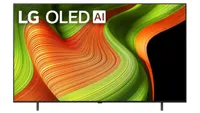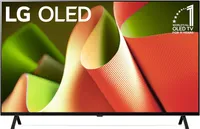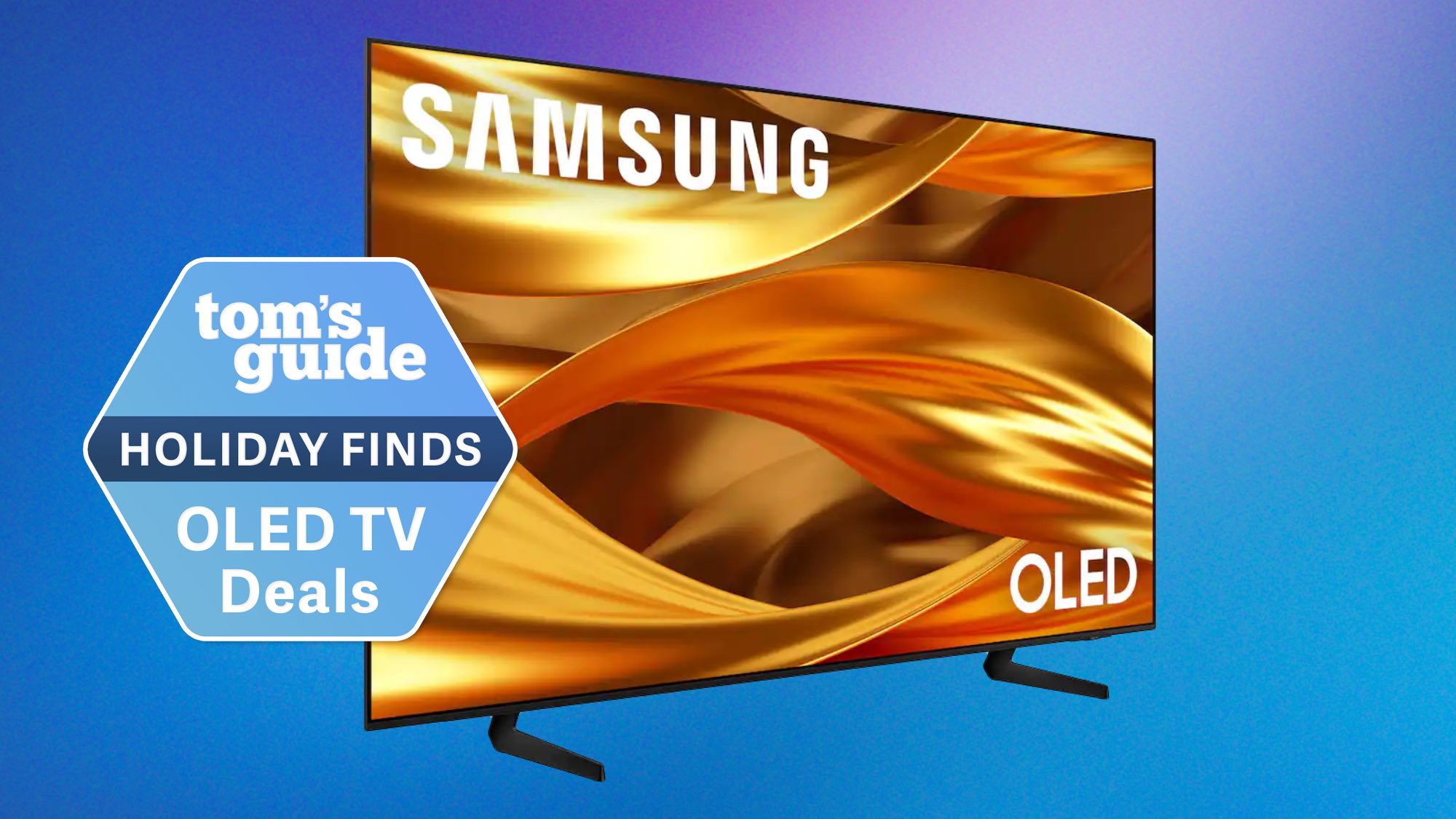Best 50-inch TVs in 2025: tested and rated
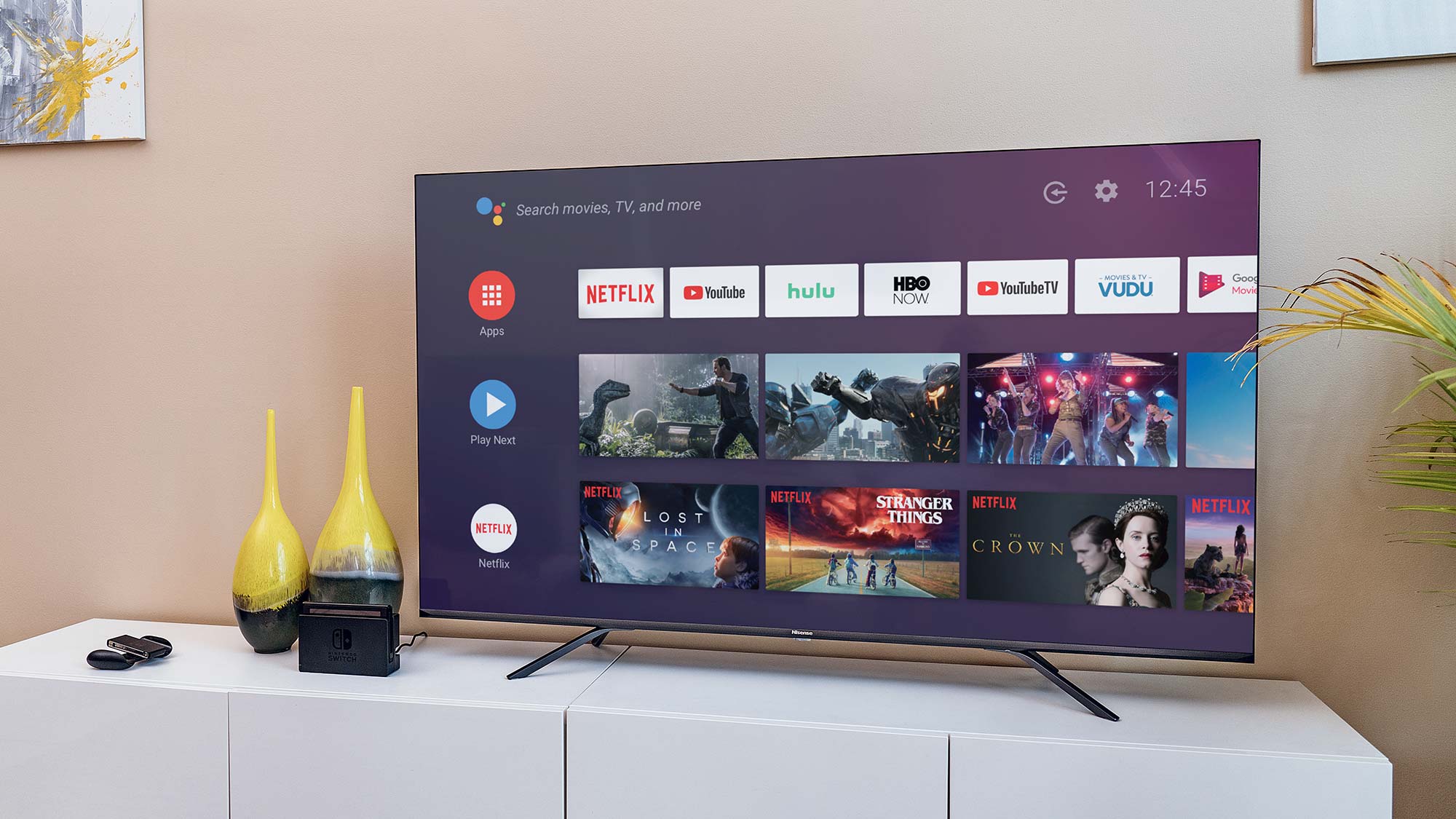
I’ve been testing the best and most popular TVs of the year for over a decade. As more people upgrade their living rooms to 65-, 75- and even 85-inch TVs, you might assume the era of 40- to 50-inch TVs is over. That's not true.
TVs in this size range are certainly harder to come by in 2025, but if you know where to look, there are still a handful of gems out there. There’s one catch: Some TVs (like OLEDs) are available in 48-inch models rather than 50-inch variants. We’ve included those here, too.
Right now, the best 48- to 50-inch TV for most people is the stunning LG C5 OLED. This five-star TV delivers incredible performance and a thorough selection of features for less than higher-end, 48-inch OLED TVs.
The quick list
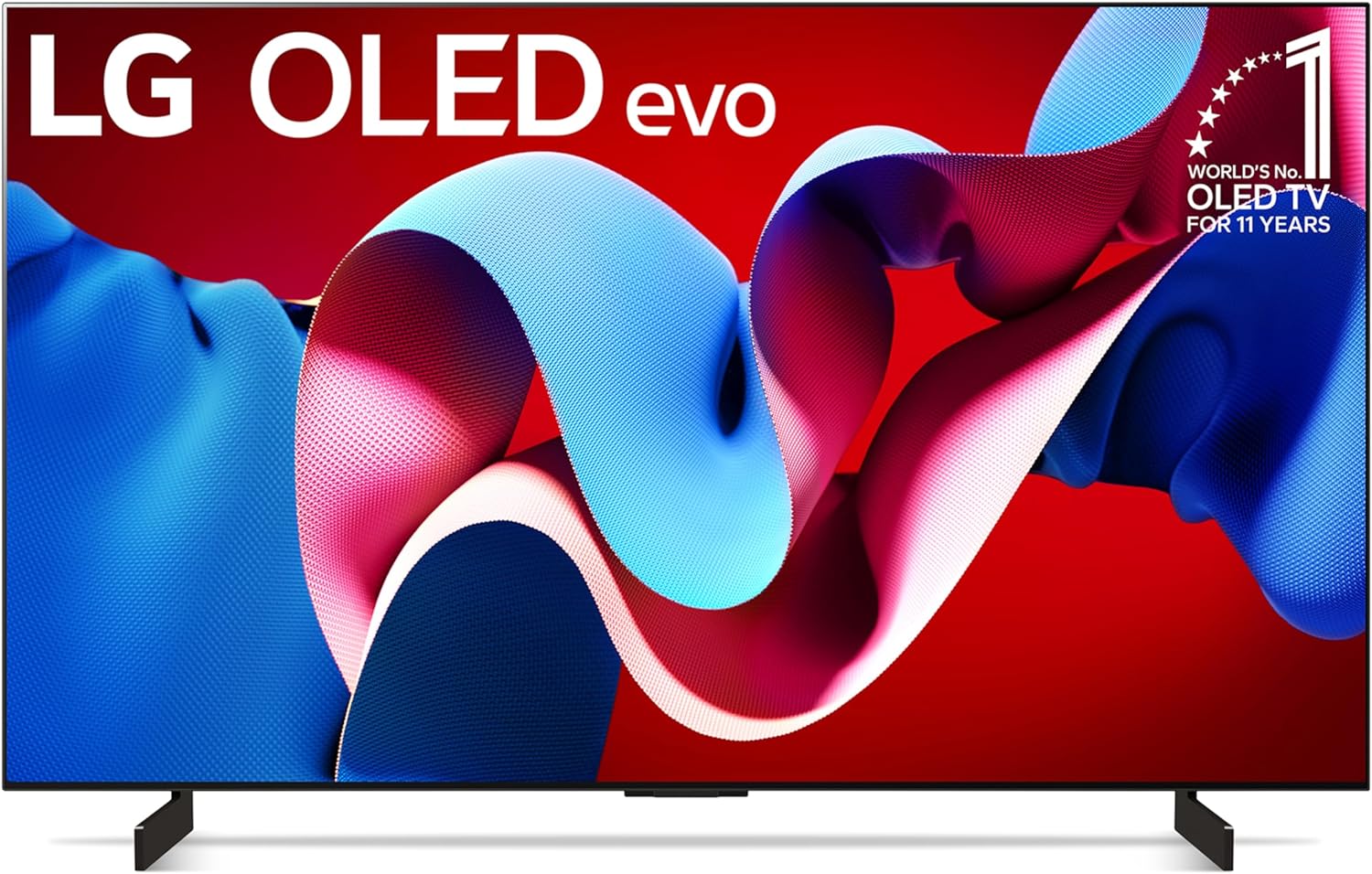
The 48-inch LG C5 OLED is the newest mid-range LG OLED, and it's right in the sweet spot between value and performance, delivering an incredible-looking picture and plenty of features.
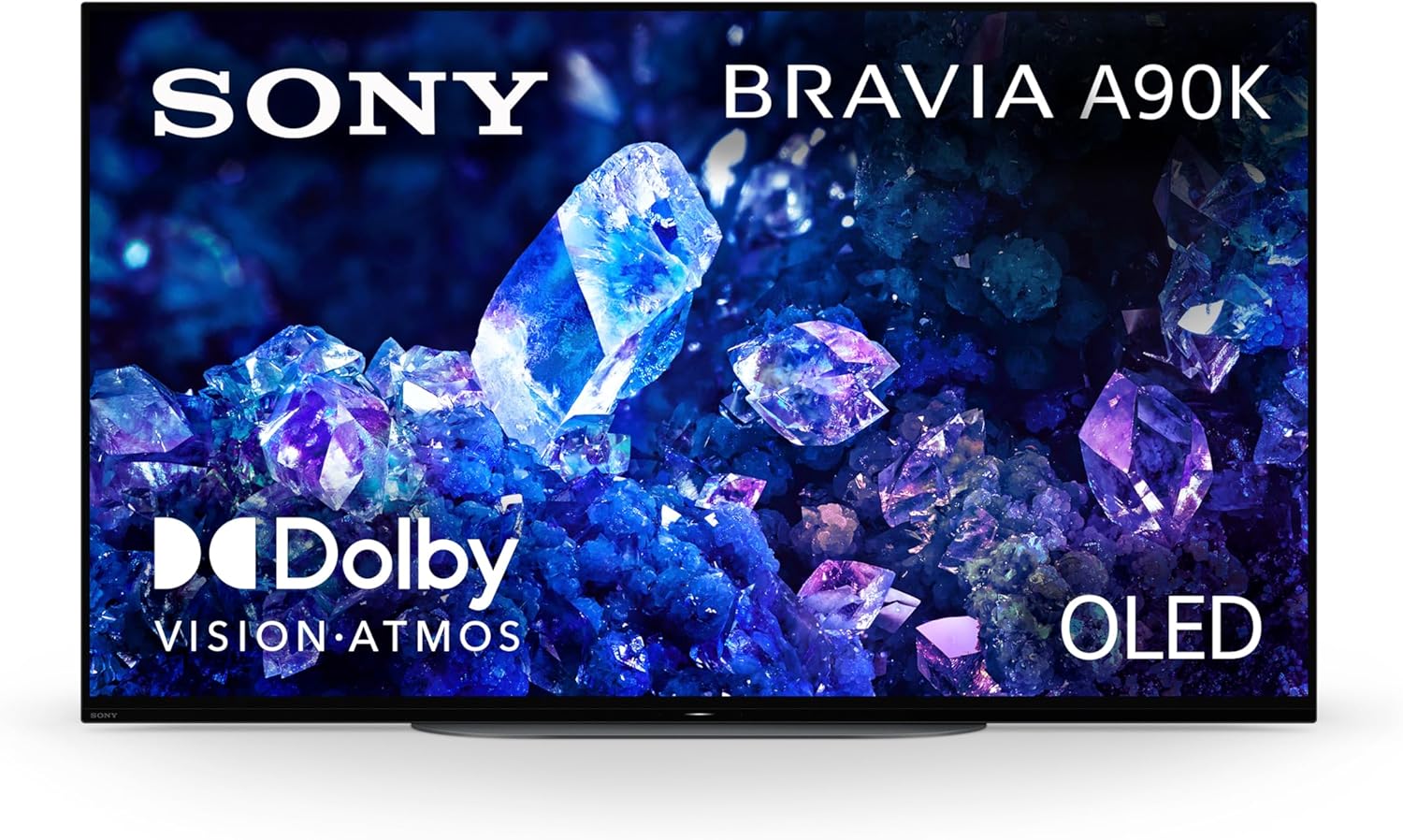
The Sony A90K is a phenomenal 48-inch OLED that's best suite for picture purists and A/V enthusiasts. Built around Sony's excellent engineering, the A90K delivers superb processing, an elegant design, and an array of gaming features.
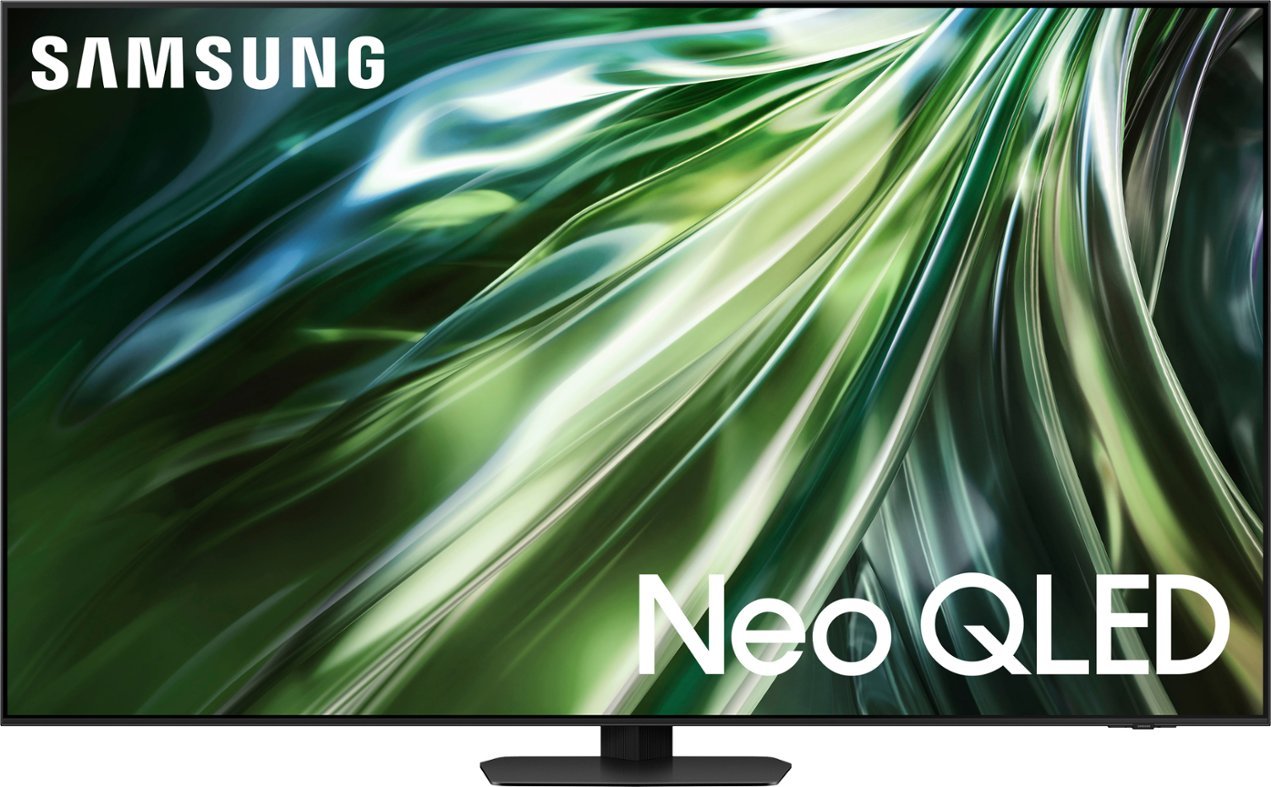
If you're searching for a 50-inch QLED that's on the newer side, the 2024 Samsung QN90D is a great pick. It offers 4 total HDMI 2.1 inputs and a QLED screen that crosses the 2,000-nit mark. It's a fantastic pick for bright-room viewing.
About the author

My name is Michael, and for over a decade, I’ve been testing and reviewing TVs. More specifically, I’ve been helping people find the best possible TV for their homes. In fact, I’ve evaluated well over one hundred TVs in my day. I’m living proof that TV doesn’t rot your brain (at least I think I am). Before joining Tom’s Guide, I covered TVs at Reviewed, a division of USA Today. Throughout my time in various TV labs, I’ve come to learn that there’s a huge difference between the best TV you can buy, and the best TV for you.
Best 50-inch TV
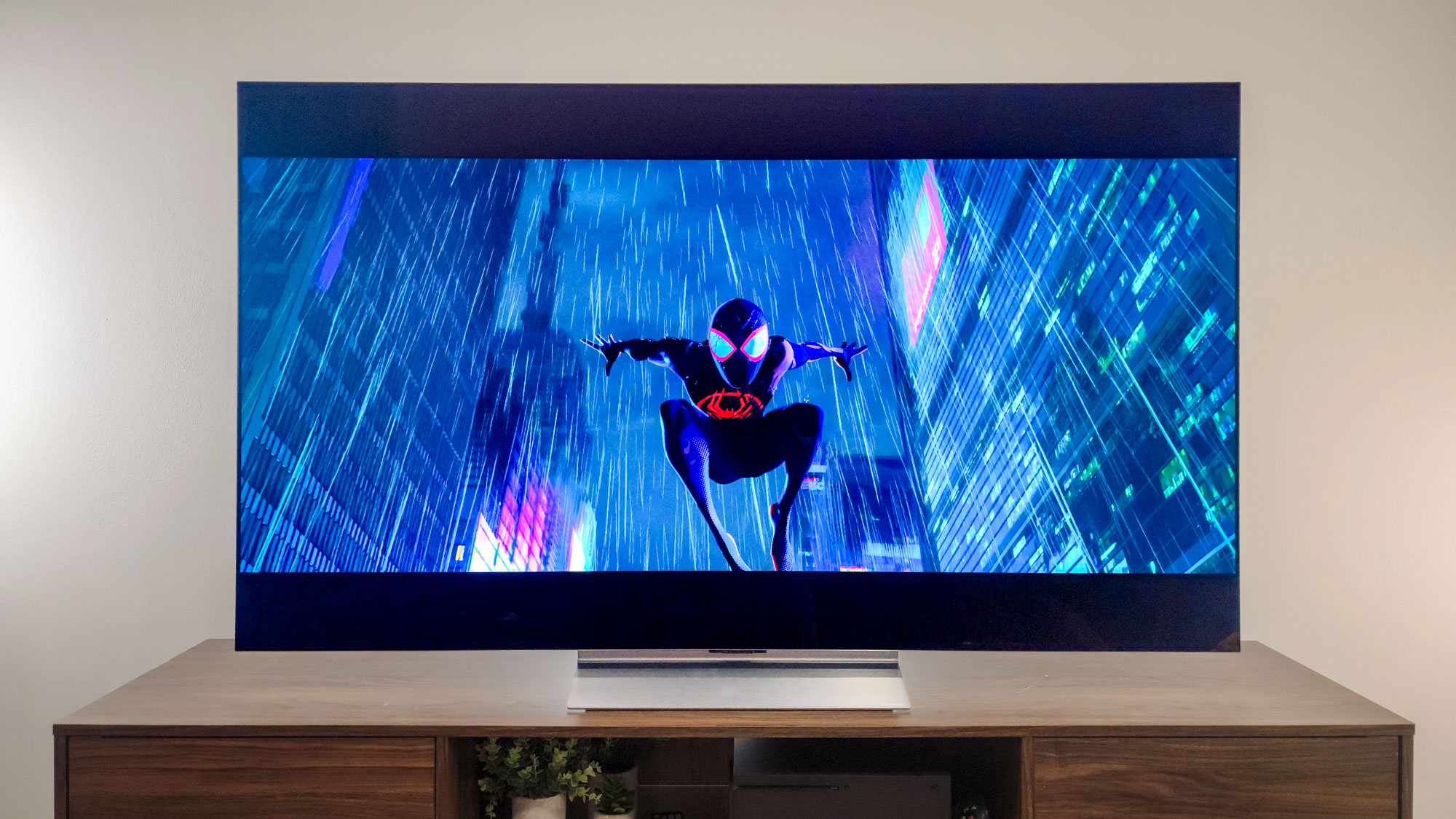

Specifications
Reasons to buy
Reasons to avoid
The LG C5 delivers the best combination of performance, features and value in the 48- to 50-inch size range.
Not only are you getting the built-in benefits of OLED display technology (like perfect black levels, extra-wide viewing angles and well-saturated color), you're also getting the most amount of gaming features in this class.
I've even heard from a number of folks who have recently chosen the 48-inch C5 as their dedicated monitor.
There are a couple of caveats that are worth considering, however. The C5 doesn't have an ATSC 3.0 tuner, so 4K over-the-air broadcasts are out of the question. In our lab tests, we were also let down by the C5's built-in speakers.
Still, the 48-inch C5 is the best option for people in the market for a smaller TV with the most amount of benefits for the price.
Read our full LG C5 OLED review.
Best OLED TV
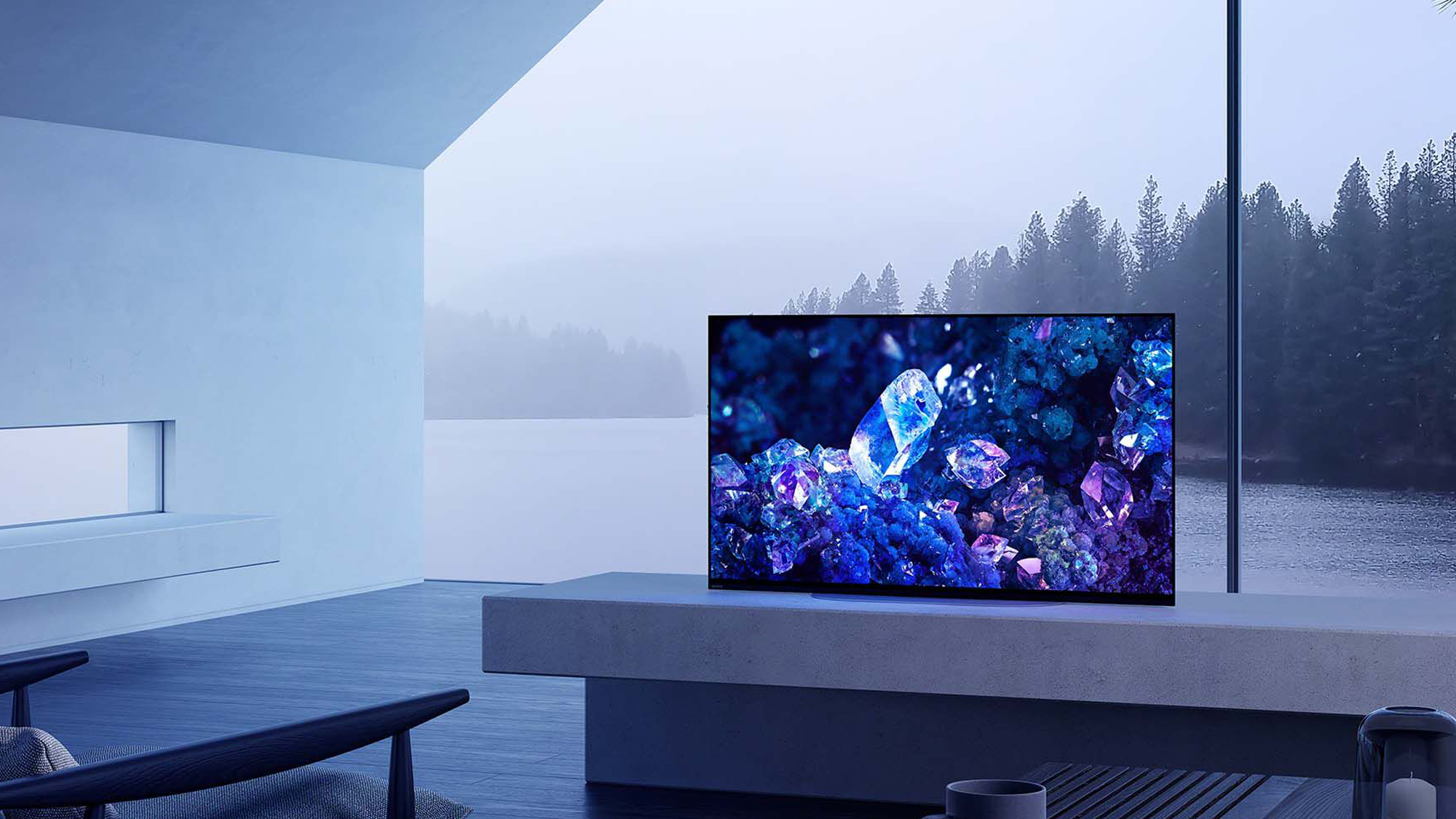

Specifications
Reasons to buy
Reasons to avoid
The Sony Bravia XR A90K is a remarkable display. It's available in a 42-inch and 48-inch model, and it's a great fit for anyone who's looking for an carefully engineered, accurate TV in this relatively small size range.
The A90K blends the many benefits of an OLED display (perfect black levels, extra-wide viewing angles, and rich color) with the top-notch processing of a Sony TV. It's not as bright as other mid-range and high-end OLED TVs, but its contrast is nevertheless stellar thanks to its self-lit pixels.
It's a great fit for gamers, too, as it sports 2 HDMI 2.1 inputs, VRR, ALLM, and even two PlayStation 5-specific features, Auto Genre Picture Mode and Auto HDR Tone Mapping.
Read our full Sony Bravia XR A90K review.
Best QLED TV
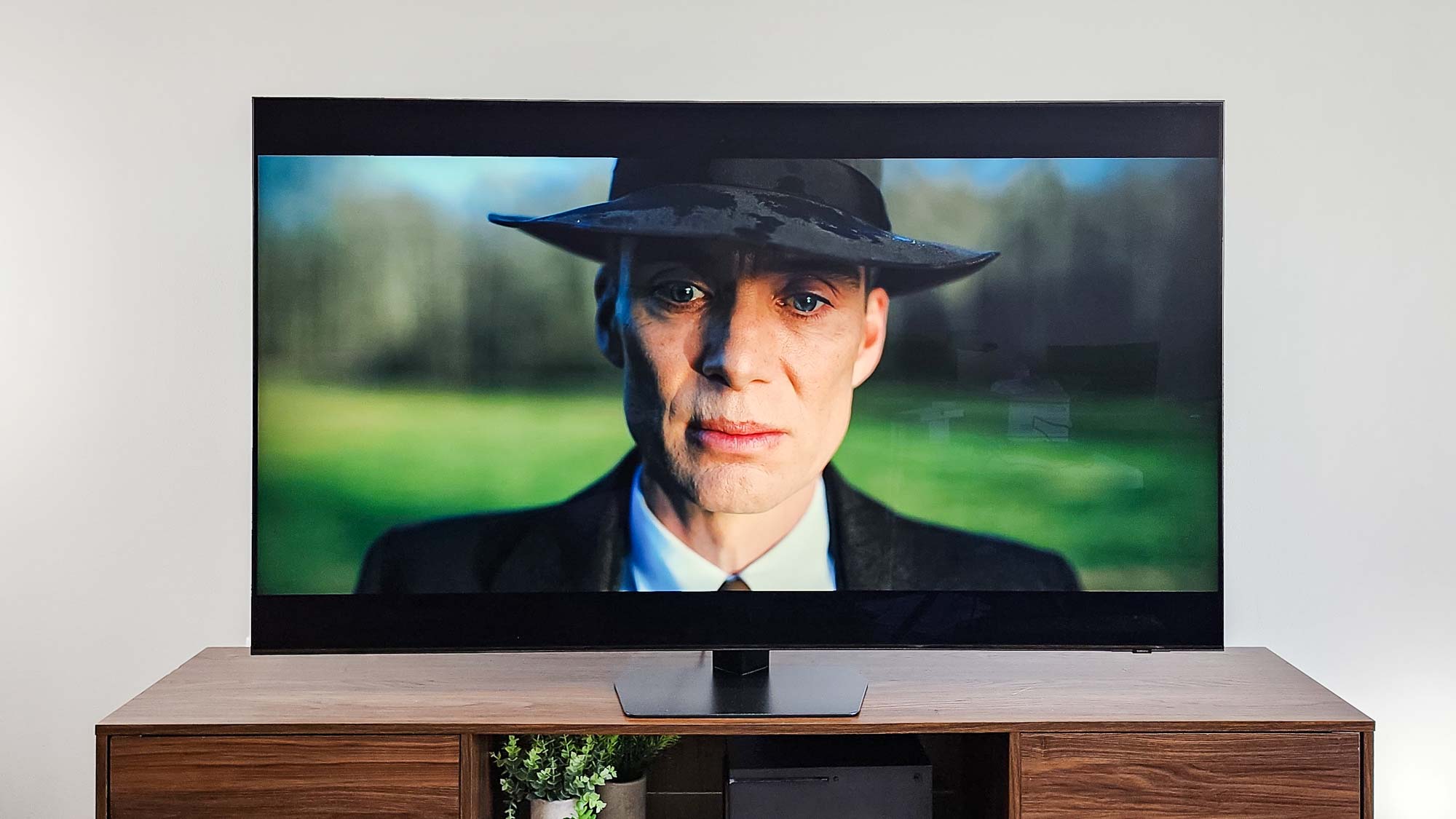

Specifications
Reasons to buy
Reasons to avoid
If you're in search of a top-tier QLED TV that's exactly 50 inches corner to corner, then you ought to consider the new Samsung QN90D. It comes with an impressive Mini-LED display and a well-rounded list of features.
The QN90D offers a native refresh rate of 144Hz when connected to a gaming PC, but console gamers can enjoy Xbox Series X and PS5 titles at 4K/120Hz. There are four HDMI 2.1 ports on-board, too, so you don't have to make tough decisions about which device goes where.
The Samsung QN90D is bright, bold and beautiful, but if you're a stickler for the most accurate picture money can buy, you should probably spring for the Sony A90K or the LG C5. Both of those options feature better out-of-the-box accuracy (though neither comes close to reaching the QN90D's 2,000 nits of brightness).
Another important note about the QN90D is that, like all Samsung TVs, it doesn't support Dolby Vision, leveraging HDR10+ instead. This HDR format works similarly to Dolby Vision, but Dolby Vision remains the more popular format across Blu-rays and the best streaming services.
Read our full Samsung QN90D Neo QLED TV review.
Best 50-inch TV test results
We put all of the TVs we review through their paces in a series of performance tests. Below you'll find a full breakdown of our findings so that you may compare and contrast the models on this list. You can read more about how we test TVs further down the page.
TV | Peak Brightness (tested) | Delta-E (tested) | BT2020 Color Volume (tested) | Input Lag (tested) |
Samsung QN90D | 2,091 nits | 4.3 | 71.76% | 9.6ms |
Sony A90K OLED | 640 nits | 4.2 | 72.07% | 16.1ms |
LG C5 OLED | 1,165 nits | 1.3 | 76.18% | 9.1ms |
For brightness, the Samsung QN90D leads the pack with over 2,000 nits under its belt, which is the primary reason we recommend it for people who want to put a 50-inch TV in a room that gets significant light.
However, with a Delta-E of just 1.3, the LG C5 offers the best color accuracy in LG's Filmmaker mode. (Delta-E is a measurement that describes color error, with lower numbers being more accurate.)
Other 50-inch TVs we've tested
The TVs above aren't the only 48-inch and 50-inch TVs we've tested. Here are other models — new and old — that didn't make the cut, but are still available to purchase.
LG 48" B5 OLED: LG's newest entry-level OLED is one of the most affordable 48-inch OLED TVs of 2025. It nets you the many benefits of OLED display technology at a lower price, with the compromise being that the B5 isn't nearly as bright as higher-end OLED TVs like the aforementioned LG C5.
Read our full LG B5 review.
LG 48" B4 OLED: LG's entry-level OLED from 2024 remains one of the best deals available for a 48-inch OLED TV, but you might have a hard time tracking down stock the further away we get from its initial release. If you can find a 48-inch B4, I recommend choosing it over the B5, as these two sets are nearly identical when it comes to performance and features.
Read our full LG B4 review.
How to choose the best 50-inch TV
How to choose the best 50-inch TV for you
Why you can trust Tom's Guide
Choosing the best 48- or 50-inch TV for you will mostly come down to three things: design, performance and features.
Design: Make sure that a TV in this size range makes sense for your space. According to our guide on the best TV size, a 50-inch TV is ideal for viewers seated 4 to 5 feet away from the screen. This makes 48- or 50-inch TVs perfect for smaller living spaces. If your space will allow for a larger unit, we recommend you go bigger. Even if you think you’ll be happy with a smaller screen, a bigger one helps make the experience of watching more engaging. And moving up to one of the best 55-inch TVs will bring more options and features.
Performance: Generally speaking, you should be on the lookout for TVs in this size range with good contrast, voluminous color and an accurate picture out of the box. A TV with high brightness is more likely to look better in well-lit rooms. If you’re not shopping for a 48-inch OLED TV, an LED TV’s display hardware is important; Mini-LED TVs typically offer the best backlight control, while backlit LEDs with local dimming usually come with better contrast than edge-lit LED TVs.
Features: A TV’s features are important. Every TV on this list comes with built-in smart features, but not every smart platform is the same. If you plan on relying on your next TV’s streaming software, look for a set with a reliable smart platform. Additionally, if you’re a gamer, familiarize yourself with the gaming features that might be important to you, like refresh rate and input lag.
We touch on all three of these categories in our reviews, so be sure to check out a TV’s full evaluation if it catches your eye.
Why is it hard to find 50-inch TVs compared to other sizes?
For all intents and purposes, 55, 65, 75 and 85 inches can be considered the standard set of sizes for TVs. Some entry-level and mid-range OLED TVs arrive in 42- and 48-inch models. Additionally, OLED TV panels are currently manufactured in 77- and 83-inch options rather than the 75- and 85-inch LED standard.
Some LED TVs are made available in a 43-inch version, and some Samsung TVs (like select Neo QLED models) can be bought in the elusive 50-inch size.
What you're left with is several OLED-based options at the 48-inch size point and a handful of worthwhile 50-inch models, the latter of which tend to belong to Samsung.
The vast majority of 50-, 60- and 70-inch TVs are low-end models that typically offer less-than-stellar performance. Many of the TVs in these uncommon size points end up being exclusive to various retailers around the holiday shopping season. Needless to say, these ultra-cheap TVs don't usually receive our recommendation.
How we test 50-inch TVs
How we test 50-inch TVs
When it comes to assessing the best 50-inch TVs, we're serious about getting it right. We follow the same procedure for 48- and 50-inch TVs that we do for TVs 55 inches and above.
Our TV-testing process consists of two key components: in-depth, scientific testing and real-world use. We believe that gathering data about a TV's performance is just as important as spending time with it in our own living rooms.
Just as you might do at home, we source content from Netflix, Blu-rays, YouTube, and more. We play video games, tinker with the TV's settings, and get to know its built-in smart platform. We have a number that represents the TV’s peak brightness, but how well the picture holds up during the day is a different story. The color measurements we gathered in the lab may be accurate, but problematic picture processing might not appear until you begin watching movies and shows.
When getting to know these TVs, we ask ourselves the sort of questions you might ponder yourself: What do all of these menus do? Which settings look the best? Is this TV hiding an always-on microphone, listening to everything I say?
Comparing lab-based data with extensive, hands-on use reveals a complete picture of a TV's strengths and weaknesses. With this hybrid approach, we're able to put ourselves in your shoes and to help you make a confident, informed choice about which 48- or 50-inch TV to buy.
FAQs
What's the best 50-inch TV for watching movies?
If you're looking for a 50-inch TV that'll really shine when you're watching movies, then your best bet is the LG C5 OLED. It's a fantastic all-round TV, but particularly excels with brightness and colors — two vital parts of movie-watching.
It's also not the most expensive TV going; there are plenty of more premium models available, but I wouldn't recommend those, as the C5 OLED offers the best performance for your money.
The most exceptional part of this Google TV-powered model is the color reproduction. The darks are sharp, so you can still pick out details, with bright, popping colors that keep the picture vivid and immersive.
The built-in speakers are more than capable, but if you're really looking for a theater-style experience at home, pair the picture on the C5 OLED with one of the best soundbars and you'll have the perfect set up.
What's the best 50-inch TV for gaming?
If you're looking for a great 50-inch TV for gaming, then I think your choice is the same as if you're watching films — the LG C5 OLED. I called this TV a fantastic all-round option, and the fact that it so deftly handles movies and games shows this.
Part of the reason I'd recommend this as a great gaming TV is the same as with movies: the color reproduction. You really need a good range of colors for games to work well, and dark darks and bright, poppy colors complement each other nicely.
There are also gaming-specific features, like the Game Optimizer and Prevent Input Delay option, which drops the lag to below 10ms. This puts the C5 OLED alongside much pricer sets from Samsung for gaming performance.
It's easy to access all these settings too, as it's a pop-up bar accessible from the Settings button on your remote control while in Game Optimizer mode. This lets you change frame rate, black stablizer and loads of other tweaks.
More from Tom's Guide
Buying guides
Features
How to
Get instant access to breaking news, the hottest reviews, great deals and helpful tips.

Michael Desjardin is a Senior Editor for TVs at Tom's Guide. He's been testing and tinkering with TVs professionally for over a decade, previously for Reviewed and USA Today. Michael graduated from Emerson College where he studied media production and screenwriting. He loves cooking, zoning out to ambient music, and getting way too invested in the Red Sox. He considers himself living proof that TV doesn't necessarily rot your brain.
